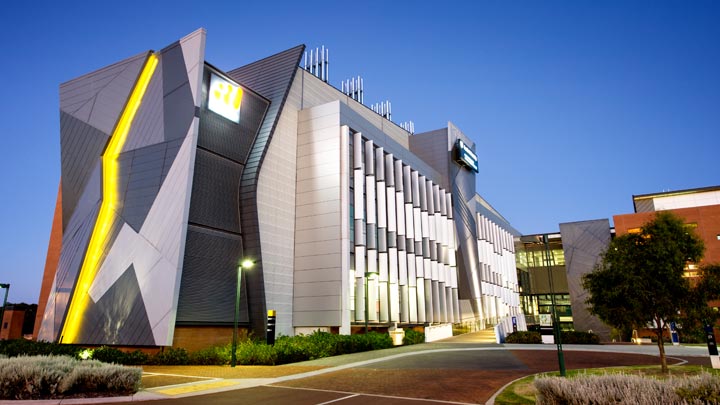Curtin University researchers have achieved a breakthrough in generating solar energy for the production of clean fuels such as hydrogen, which is considered instrumental in the transition to a low carbon economy.
In a paper published today in the journal Advanced Materials, the researchers describe the new way to produce low cost and low emission hydrogen and other clean fuels with the help of tiny nanocrystals as highly efficient catalysts.
Previously, solar energy was harvested for clean fuels with cadmium-based semiconductors in combination with expensive noble metals including platinum, iridium and ruthenium. However, the high toxicity of cadmium and cost of noble metals have been the main obstacles to their widespread use.
“Our research invented tiny crystals that do not contain any noble and toxic metals, which can be directly used as environmentally friendly catalysts to convert solar energy into hydrogen,” said lead researcher Dr Guohua Jia, from Curtin’s School of Molecular and Life Sciences and the Curtin Institute for Functional Molecules and Interfaces.
The Curtin researchers say the new method offers environmental and economic benefits that would make it attractive to industry involved in the production of low cost and low emission clean hydrogen, which is expanding fast as pressure mounts for countries around the world to decarbonize their economies and consider options such as hydrogen for powering cars and industrial processes.
“These nanomaterials may be of great interest to the energy industry, as they are made from cheap and near-abundant elements and offer industries a potential cleaner and cheaper fuel source,” Dr Jia said.
Indeed, the breakthrough comes at a time when low emissions hydrogen is being increasingly considered as a significant export opportunity for Australia given the country’s abundant renewable energy resource options. The momentum for hydrogen exports has been aided by a growing number of national research and development projects in the field.
The research titled ‘Spontaneous Formation of Noble- and Heavy-Metal-Free Alloyed Semiconductor Quantum Rods for Efficient Photocatalysis’ involved multidisciplinary collaborations between Curtin University, University College London, The Australian National University, Edith Cowan University and The University of Western Australia.
This content is protected by copyright and may not be reused. If you want to cooperate with us and would like to reuse some of our content, please contact: editors@pv-magazine.com.









By submitting this form you agree to pv magazine using your data for the purposes of publishing your comment.
Your personal data will only be disclosed or otherwise transmitted to third parties for the purposes of spam filtering or if this is necessary for technical maintenance of the website. Any other transfer to third parties will not take place unless this is justified on the basis of applicable data protection regulations or if pv magazine is legally obliged to do so.
You may revoke this consent at any time with effect for the future, in which case your personal data will be deleted immediately. Otherwise, your data will be deleted if pv magazine has processed your request or the purpose of data storage is fulfilled.
Further information on data privacy can be found in our Data Protection Policy.